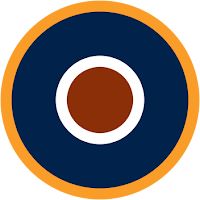The Bristol Beaufighter was also employed, albeit in small numbers by the following countries:
- Germany: There is one photograph suggesting that at least one Bristol Beaufighter Mk. IC was captured by the Germans and put to flight in Luftwaffe markings. However, as the picture we had access does not enjoy the highest quality available, the drawing we made below should be taken with a grain of salt.
- Italy: On 7th January 1942 a Beaufighter Mk. IC registered as T4887 was on an Overseas Air Despatch Unit flight from Gibraltar to Malta when landed by mistake at Magnisi airfield, close to Augusta and was captured intact by the Italian personnel. This happened because the Italians were jamming the Malta radio-beacon with a jammer truck placed for that purpose at Porto Palo. Both the pilot, Flt. Sgt. Jones and the navigator, Flt. Sgt. Bold were taken prisoners.
The aircraft was quickly taken to Guidonia, the testing centre of the Regia Aeronautica (the Royal Italian Air Force) and was repainted with Italian markings and colours and even received an Italian registration: MM4887.
At Guidonia the Beaufighter spent almost one year, where it was flew tested by many pilots, who praised the excellent avionics and the power of the Bristol Hercules engines.
Oddly enough, the Italian engineers did not consider necessary to reverse engineer the British throttle lever action, which was totally abnormal for Italian pilots.
After testing was completed, the Beaufighter was assigned to 235ª Squadriglia of Comando Intercettori Leone (235th Flight of Leone Interceptor Command) in mid-December 1942 but it did not last long as it was lost to a take-off accident at Venegono airfield, close to Milan, on 29th January 1943. The most probable cause for the accident was an erroneous throttle control input by the pilot, Tte. Ercole Norace Zedda, who died in the accident, while Flight engineer Sgt. Mg. Motorista Sacchi was severely injured. - Portugal: A total of sixteen Beaufighters TF. Mk. Xs were bought by the Forças Aéreas da Armada (literally 'Navy's Air Forces') and were shipped between March and April 1945.
All those aircraft were based at Portela de Sacavem airfield, close to Lisbon by Esquadrao 'B' ('B' Squadron) of the Forças Aéreas da Armada. Those Beaus received Portuguese serials ranging from BF.1 to BF.16 and the squadron also operated from Averio airfield under command of Centro de Aviaçao Naval de S. Jacinto (S. Jacinto Naval Aviation Centre).
On 22nd October 1945 one Beau, BF.4 crashed at Ovar beach, close to S. Jacinto, killing the pilot, 1st Lt. Felix F. Lobo and Sgt. Antunes Nogueira and the wireless operator, Luis Pacheco, dying from the burns he got while trying to rescue his partners from the burning plane. The crash was caused by a broken drive shaft on one of the engine oil pumps, so Bristol sent mechanics to Portugal to repair and modify the remaining airframes to prevent this from happening.
A replacement Beaufighter TF. Mk. X (ex RD862) was supplied by Bristol and received the Portuguese registration of BF.17.
The Beau was kept in service with Forças Aéreas da Armada until 1950 when Esquadrao 'B' was disbanded and two of the remaining Beaus were assigned to the Instituto Superior Técnico (Technical High School) at Lisbon to serve as instructional airframes, while another airframe was passed to the South African Air Force in exchange for a Spitfire Mk. IX registered as ML255.
Those two airframes remained at the Instituto Superior Técnico until 1965 when one of them, BF.10 was sent to Oficinas Gerais de Material Aeronáutico (General Aeronautical Material Workshops) at Alverca, Lisbon, where the national aeronautical museum was founded on 1st July 1969 and BF.10 was restored for display.
The other airframe, BF.13 (ex-RD253) was shipped back to the United Kingdom as gift from the Portuguese government to the Royal Air Force (RAF) and was later restored at RAF St. Athan (Glamorgan, Wales) before being placed on display at the RAF Museum in Hendon on 15th March 1971 where it can be seen nowadays.
1st https://en.wikipedia.org/wiki/Bristol_Beaufighter
2nd Bancarella Aeronautica - Ali Straniere In Italia 6 - Prede di Guerra
3rd Scale Aircraft Modellers Datafile 6 - Bristol Beaufighter













